How To Make Yogurt
This post may contain affiliate links. See my disclosure policy.
Whether you’re making regular or Greek yogurt, it’s time to learn How to Make Yogurt! It’s incredibly easy, requires virtually no prep work and the outcome will amaze you: Wonderfully thick, creamy, luxuriously delicious yogurt! This homemade yogurt recipe is SO good and SO easy, you’ll NEVER need to buy store-bought again!
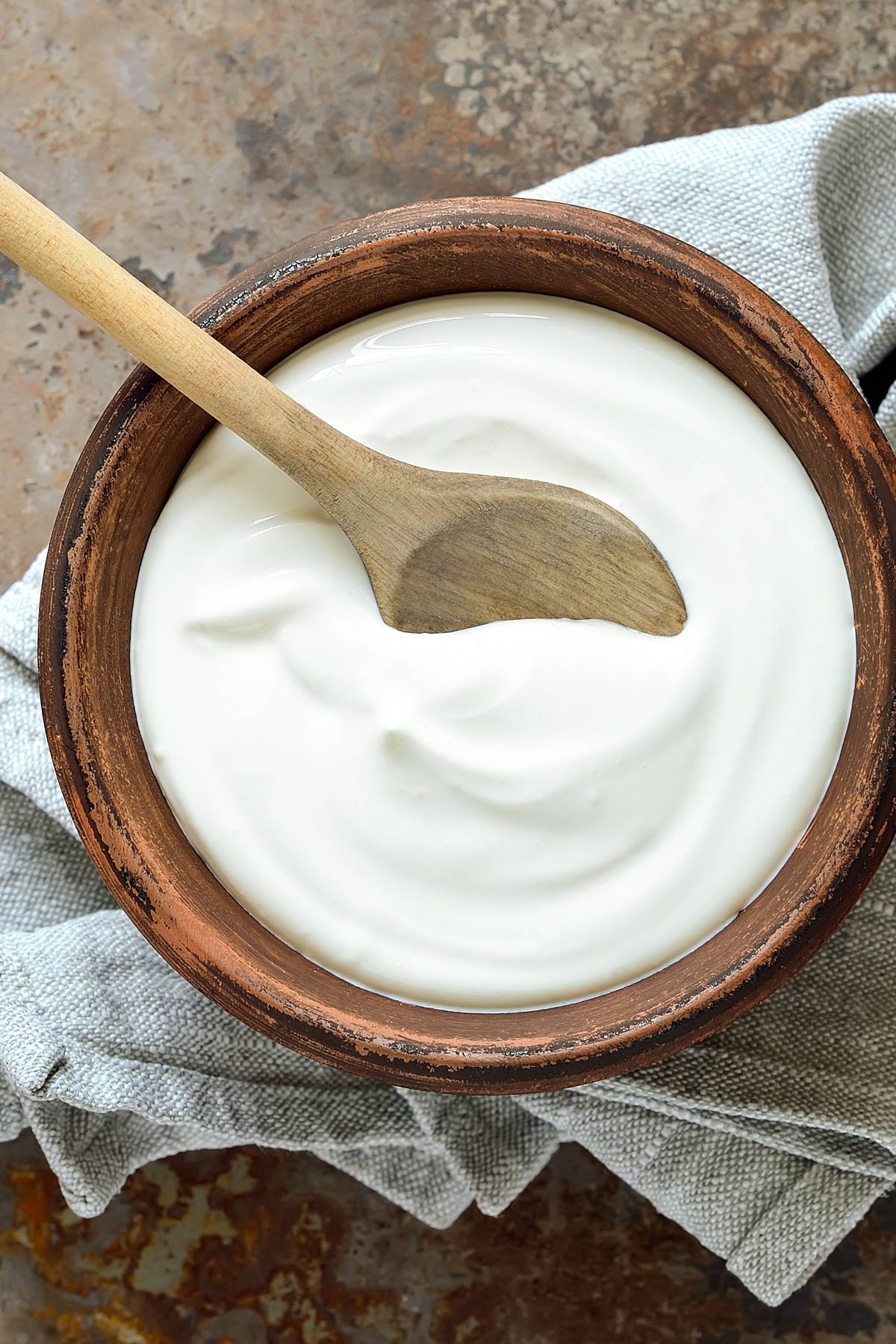
How long does it take you to pour a gallon of milk into a slow cooker? That’s how much prep time is involved in making this gloriously thick, rich, creamy Easy Homemade Yogurt recipe! And you have full control over its thickness – we’ll show you how to make Greek yogurt or regular yogurt, your choice!
Why Should I Make My Own Yogurt?
There are several advantages to making your own yogurt: It tastes better, has a better texture, is MUCH CHEAPER, and it’s MUCH HEALTHIER than store-bought because it has a MUCH HIGHER PROBIOTIC CONTENT. Really, it’s a complete win-win!
What Kind of Milk Should I Use to Make Yogurt?
For the thickest, creamiest yogurt we recommend whole milk but you can also use 2% and even skim milk.
How to Make Greek Yogurt
The difference between making regular and Greek yogurt simply comes down to how long you strain it. More on that in the recipe below.
Homemade Yogurt Ingredients and Equipment
- Milk
- Plain yogurt (as a starter culture)
- Cheesecloth
- Thermometer
- Pot or Slow Cooker
- Colander
Besides milk you’ll need some plain yogurt as a starter culture for your initial batch. Then you can use yogurt from that batch for your next batch and so on. There is no need to buy a special starter culture, all you need is plain yogurt. The plain yogurt will act as a starter culture to introduce healthy bacteria/probiotics to your homemade yogurt. It is essential that the yogurt you use has live cultures in it. Most grocery stores sell plain yogurt with live cultures but just be sure to check the label on the container confirm that it has l. bulgaricus and s. thermophilus in it.
You will also need some cheesecloth to strain the yogurt (trust me, it’s much easier than it may initially sound). I use and recommend this cheesecloth because it’s 100% unbleached cotton, is high grade, is very durable for multiple uses, and you get a ton of it. Overall it’s the best value I have found for the quality.
You’ll also need a thermometer. Heating the milk to right temperature and then reducing it to the right temperature are both critical to the success of your yogurt.
The other item you’ll need is either a slow cooker or a large, heavy stock pot and a colander for straining.
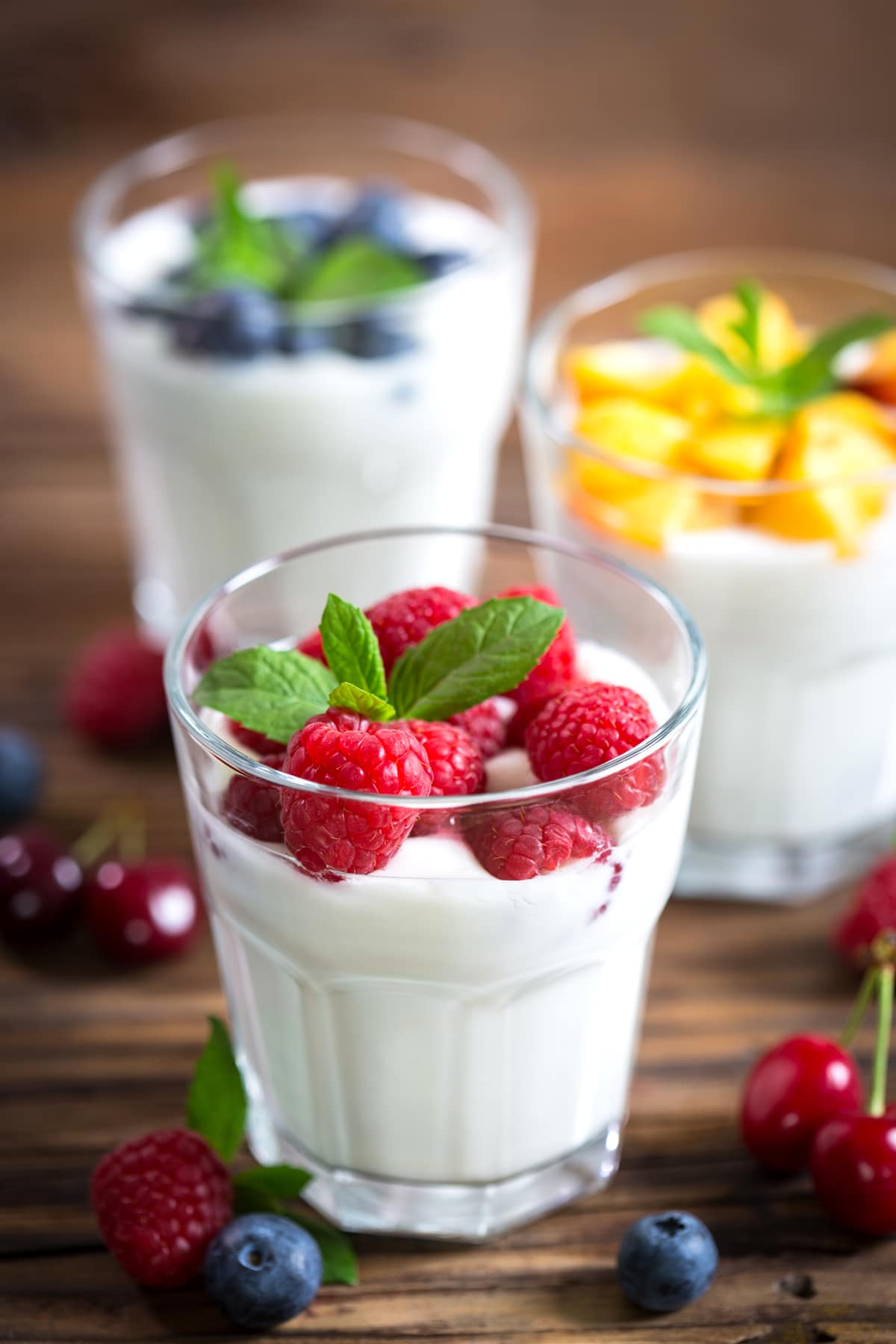
Slow Cooker vs Stovetop
You can use either with great success and the choice is entirely up to you.
Slow Cooker Method
Pros: The heating process is slow and gentle so there is no risk of scorching the milk and having to throw it all out. Plus it’s hands free and the milk can heat up over the course of a few hours while you’re doing other things.
Cons: It takes a lot longer to heat up the milk than if you’re using a pot. But that’s only a disadvantage if you’re in a hurry.
Stovetop Method
Pros: It’s much quicker than using a slow cooker. The milk heats up faster and then all you have to wait for is for it to cool back down and then set.
Cons: It requires your constant attention and as the milk gets hotter it requires constant stirring in order to prevent the milk from burning (and it can burn very easily if you’re not paying attention).
You can see that both have their pros and cons and it purely comes down to personal preference. I use and like both methods but generally use my slow cooker/crock pot more often because of the hands-free convenience of plugging it in and going about my daily tasks. Any crock pot or slow cooker will do the job. I use and love my Hamilton Beach Stay or Go 7 Quart Slow Cooker.
Do I Have to Bring the Temp to 180 F if I’m Using Pasteurized Milk?
Virtually every yogurt-making recipe will tell you to heat the milk to 180 degrees F before bringing it back down to 110 degrees F to inoculate it with a starter culture. The question you may ask yourself is, if I’m using pasteurized milk already do I need to heat it to 180 degrees or can I just skip that step?
Here’s what I’ve learned: Heating it to 180 degrees isn’t for the purpose of killing unwanted bacteria as much as it is for creating a thick texture. The heat changes the structure of the proteins in the milk and enables it to thicken into yogurt. I wanted to test that for myself and heated the milk to just a little over 110 degrees, added the starter culture, and proceeded from there. It hardly thickened at all. But when I heat it to 180 degrees, then let it cool to 110 degrees before adding the starter, it thickens up beautifully.
What is Whey?
That yellowish liquid that’s left over after you strain the yogurt….that’s called whey. When making homemade yogurt, you’ll always end up with some whey as a by-product. The longer you strain the yogurt, the thicker it will get, the more whey it will yield. If you strain it to full capacity for an extra thick Greek yogurt, you’ll end up with about 8 cups of whey, but every batch will be different.
Whey is milk minus the fats and solids. It’s basically water with lactose and protein. And it’s the protein that’s the valuable ingredient here. Milk contains two types of protein, casein and whey. Most of the casein ends up in the yogurt and the whey is in the liquid by-product.
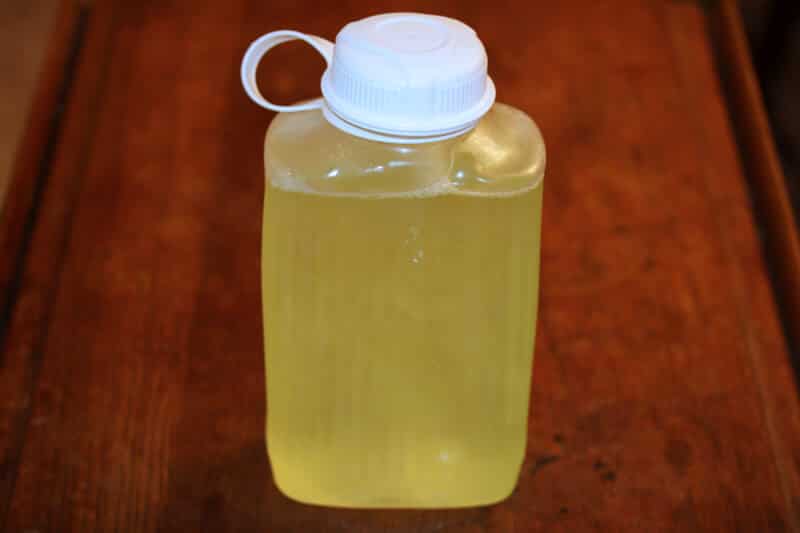
How to Use Leftover Whey
I’m so glad you asked! Whey is a great source of protein and is used in powdered form in protein shakes and protein bars. But how can you this leftover liquid whey? Here are a few ideas:
- Use it in place of water when you’re making broth or soup for an extra rich broth.
- Use it in place of water for baking bread or pastries.
- Add it to your smoothies of an extra protein boost.
- If you have a vegetable garden, use it lower the pH level of your soil if you’re growing things that prefer soil with a higher acidity level, like tomatoes.
Can You Freeze Whey?
Yes, it can be frozen for up to 6 months.
Can I Make a Smaller Batch of Yogurt?
This recipe calls for a gallon of milk because this yogurt will keep for a good 2 weeks in the fridge, giving you plenty of time to finish it off. (Note that a gallon of milk won’t yield a gallon of yogurt. It will yield about 2 quarts of yogurt depending on how long you strain it.) If however you would prefer to make less you can absolutely cut the recipe in half and use a half gallon instead. Just be sure to remember to reserve enough of the yogurt to act as the starter for your next batch.
How Much Protein and Calories Are in My Yogurt?
This is a question I get frequently. Calorie count and protein content will depend on how much whey was removed in the straining process and there really isn’t a way to measure that. Even calories are hard guess because through the straining process the end product is much more condensed that the original milk product. The best we can do is estimate.
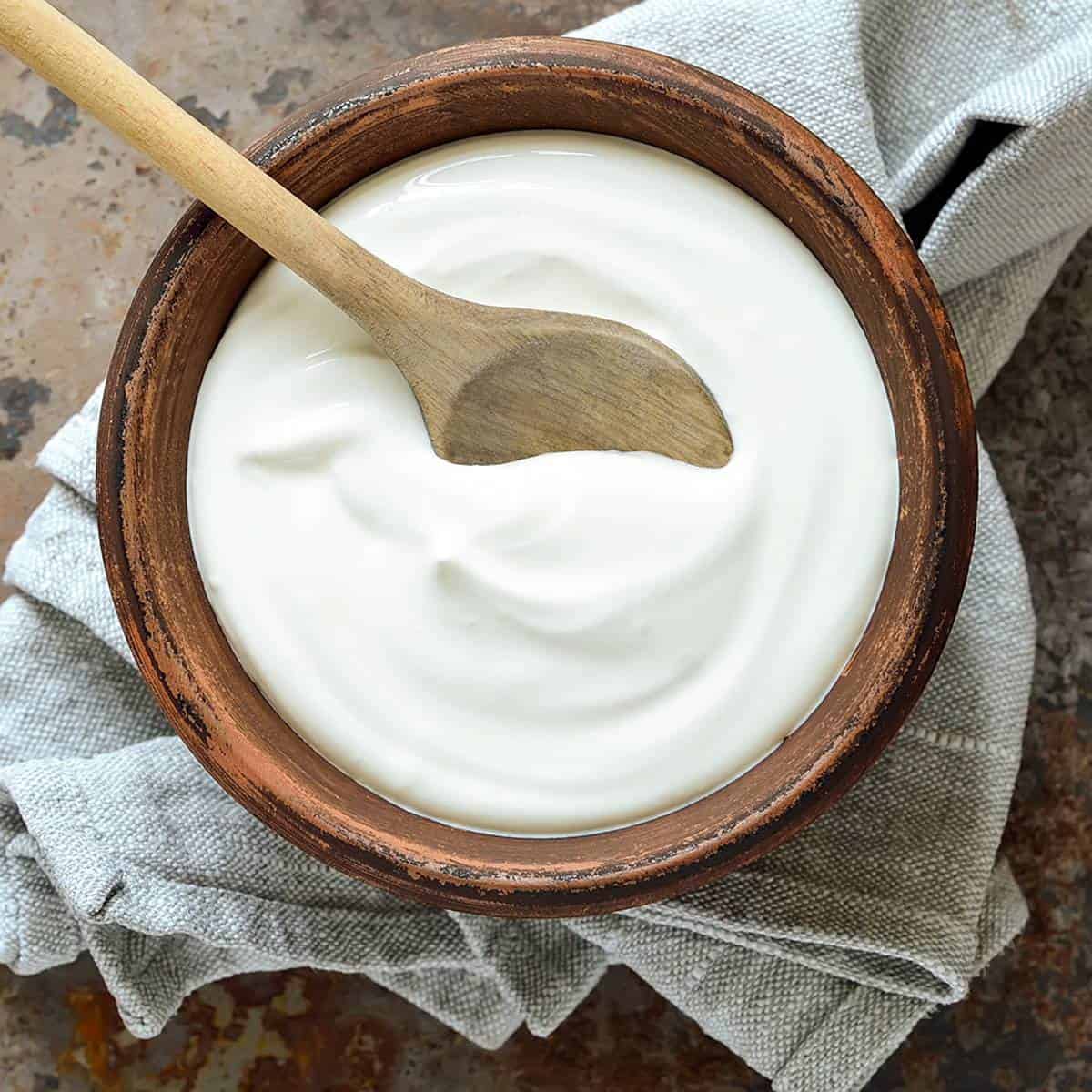
Homemade Yogurt Troubleshooting
“My yogurt didn’t set and I have yogurt soup!”
There may be an occasion or two when your yogurt doesn’t set properly. I’ve made probably close to 50 batches and fortunately it’s only happened to me twice but it was nevertheless disappointing. Many factors can be at play for a failed batch, anything from the first step to the last. If you’ve done everything right and have followed every step correctly from start to finish, all I can say is that the yogurt-making process involves fragile live bacteria and sometimes, well, they have a mind and will of their own. And if you’re using store-bought yogurt as your starter culture, it may claim to have live bacteria that is…no longer live. The only thing to do is try again with a new batch. But just because it failed turning into yogurt doesn’t mean you can’t still enjoy it.
Don’t throw out the “soup!”
Throughout Europe and other parts of the world you can get a variety of delicious plain and flavored yogurt drinks. You can drink your yogurt milk and you’ll still be benefitting from those healthy probiotics. Add some honey or flavored syrups or blend in some berries or fruits of your choice and enjoy it in smoothie form!
Ways to Enjoy Yogurt
There are so many ways you can enjoy your homemade yogurt. Here are just a few ideas:
- Add fresh berries or cut up fresh fruits to enjoy with your yogurt along with a sprinkle of cinnamon and/or a drizzle of honey or maple syrup for a healthy breakfast or snack.
- Make parfaits with fresh fruit and granola.
- Blend it with fresh or frozen fruit or with nuts, peanut/cashew/almond butter, chocolate, etc. to make smoothies.
- Add other ingredients and seasonings to use as a sandwich, toast or bagel spreads.
- As the base of a savory dip for oven-baked chips, bread or raw veggies.
- As the base of a sweet dip for fresh fruits or toasted cinnamon pita strips.
- Use it in place of mayonnaise for ranch dressing and other creamy dressings.
- Make homemade tzatziki sauce.
- Replace sour cream and buttermilk with yogurt in baked goods like cakes, muffins, pancakes or our sweet potato pie.
- Make yogurt fruit popsicles.
- Use it in place of sour cream for things like tacos, enchiladas and burritos.
- Use it in place of mayonnaise for egg, tuna, chicken salad and potato salad.
The way I most commonly enjoy my yogurt is simply stirring in a spoonful of fruit preserves with a little powdered stevia for a healthy, low-carb treat to satisfy my sweet tooth. Another favorite way is to make vanilla yogurt by stirring in some high quality vanilla bean paste.
You’re going to love how rich and creamy this yogurt is – it’s almost like eating dessert!
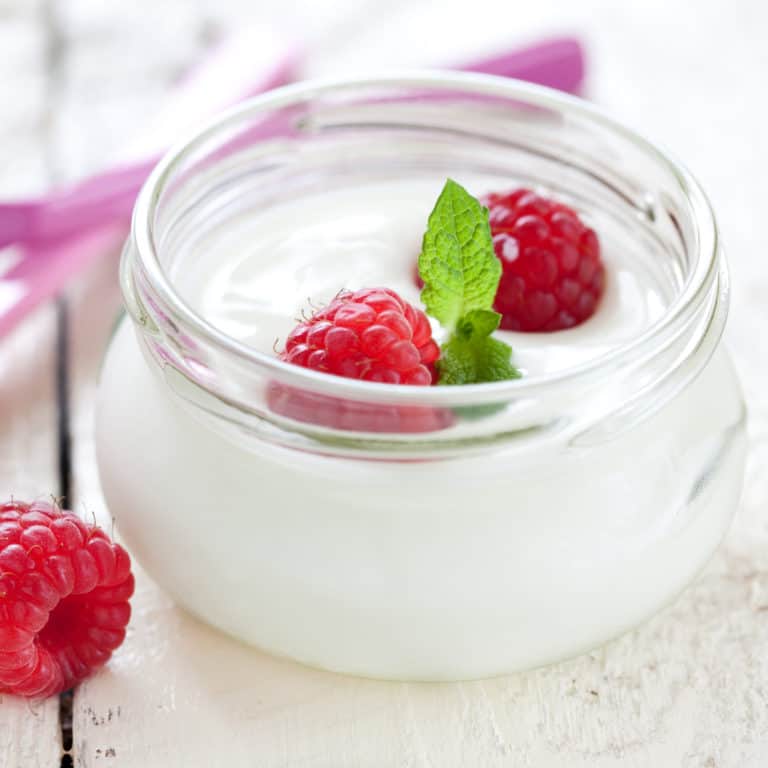
How to Make Yogurt
Let’s get started!
IF USING A STOCK POT INSTEAD OF A SLOW COOKER: If you’re in a hurry or don’t have a slow cooker you can use a stock pot. Simply heat the milk in a large stock pot over low to medium heat. Just be sure to stir it regularly, especially as it gets hotter, to prevent the milk from scorching. Then follow the rest of the instructions as written.
Pour the milk into the slow cooker and set it to HIGH. Go about your business, it’ll take at least 2 hours (usually longer) before the temperature’s up to 180 degrees. Use a thermometer to check the temperature.
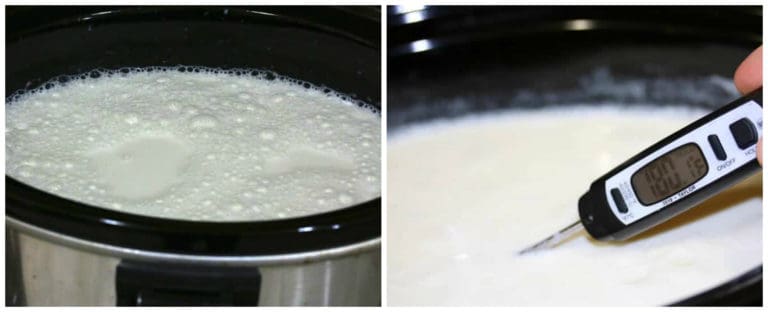
Once the temperature is up to 180 degrees, turn off the slow cooker or stove top and let the milk cool to 110 degrees F. Again, go about your business, this will take at least another 2 hours.
Once the temperature is 110 degrees, mix a little of the warm milk into the room temperature starter yogurt, then gently but thoroughly stir it back into the milk using up and down, left and right motions (not circular). Close the lid and turn off the slow cooker.
Wrap a large bath towel around the slow cooker and let it sit undisturbed in a draft-free, room temperature (or warmer) area for 10-12 hours or overnight. If the environment is too cool the yogurt will not set.
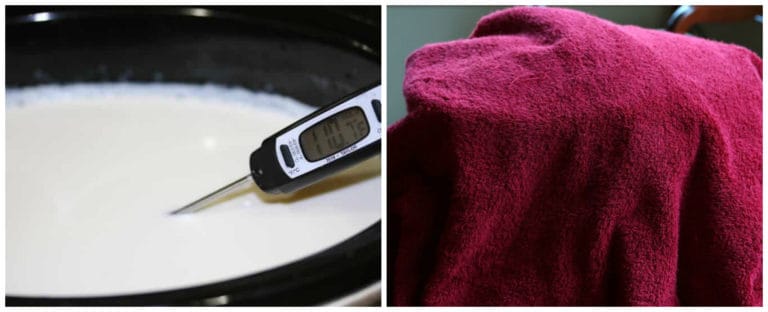
When you remove the lid you’ll find that the milk has thickened and the whey has separated.
Look at that fabulous thick texture! The transformation is almost magical. You’ll be so excited the first time you make this! I still get excited every time I lift the lid.
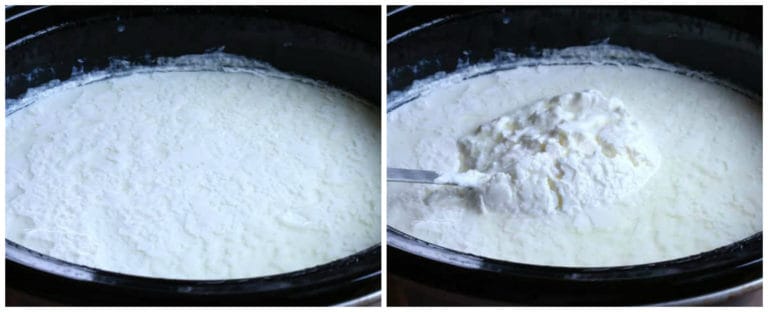
Line a colander with some cheesecloth.
I currently use this cheesecloth. It’s great quality and you get a lot of it for an excellent price.
Pour the yogurt into the cheesecloth. If it doesn’t all fit (depending on the size of your colander), let the yogurt strain until there’s room enough to add the remaining yogurt, then continue to strain.
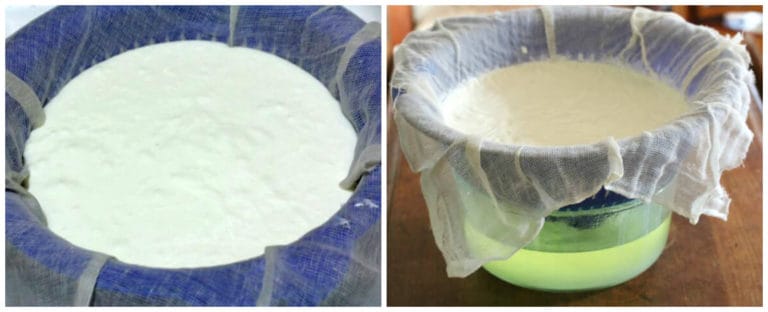
Depending on how thick you want the yogurt, this will take several hours. For thick Greek yogurt, you’ll end up straining it for at least 4 hours. That will also depend on the gauge of the cheesecloth. Set the colander on top of a large glass bowl. If leaving it to strain for several hours, you can put it in the fridge if you prefer and let it strain there.
See the liquid in the glass bowl above right? That’s whey. See the section “How to Use Whey” for ideas.
Store the yogurt covered in the fridge for up to 2 weeks. When you’re ready to make another batch, use some of the previous batch for the starter culture.
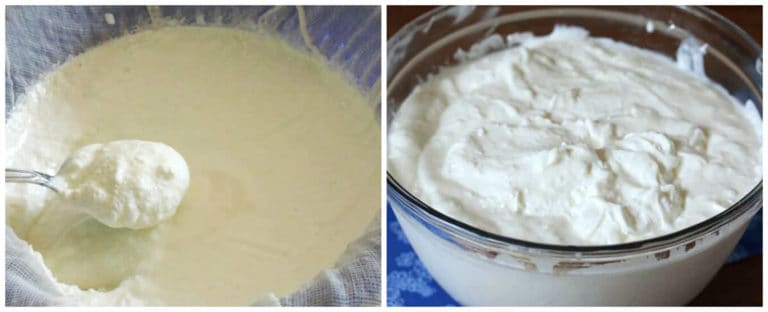
If fully strained to make Greek yogurt, you’ll end up with about 2 quarts (8 cups) of whey and 7-8 cups of Greek yogurt.
You’ll end up with less whey and more yogurt if you strain it less to make regular yogurt.
Cook with it, bake with it, eat it plain or with a variety of mix-ins, whatever your heart desires!
Enjoy!
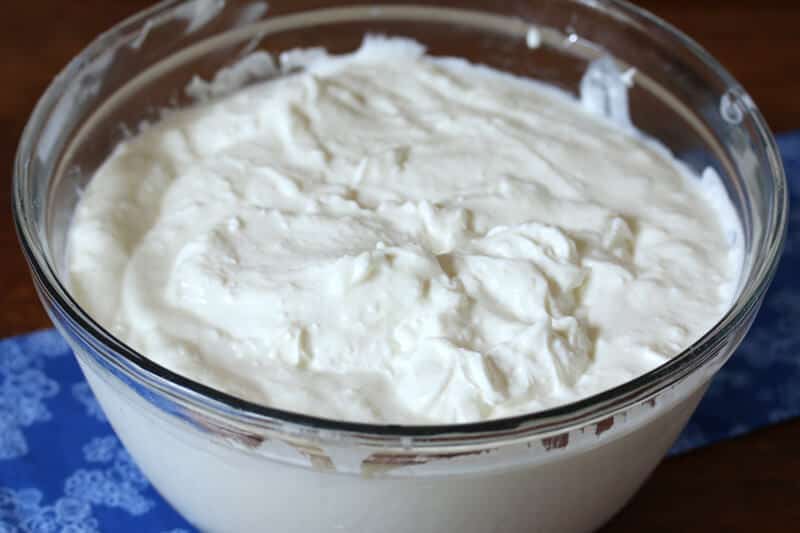
Be sure to also check out my tutorials on how to make:
Save This Recipe
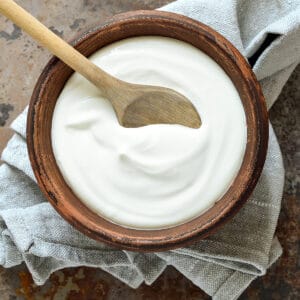
How To Make Yogurt
Ingredients
- 1 gallon whole milk, 2% or skim milk (whole milk is recommended for thickest, creamiest results) (see note about using raw milk) *this method does NOT work with non-dairy alternatives
- 1 cup plain yogurt at room temperature, either from previous batch or store-bought (**The yogurt must have live cultures in it to work. Check the ingredients to make sure they include l. bulgaricus and s. thermophilus.)
- Equipment:
- Slow cooker or Pot
- Thermometer
- Cheesecloth
- Colander
Instructions
- IF USING A STOCK POT: If you're in a hurry or don't have a slow cooker you can use a stock pot. Simply heat the milk in a large stock pot over low to medium heat. Just be sure to stir it regularly, especially as it gets hotter, to prevent the milk from scorching. Then follow the rest of the instructions as written.IF USING A SLOW COOKER: Pour the milk into a slow cooker set to HIGH and close the lid. It will take 2-3 hours before the temperature of the milk is up to 180 degrees F. Check it with an instant-read thermometer. Once it's at 180 degrees, turn off the slow cooker, close the lid, and let the milk cool to 110 degrees F. This will take another 2-3 hours. Once the temperature is between 110 and 115 degrees F, add some of the warm milk to the plain yogurt, stir to combine, and then gently but thoroughly stir the mixture back into the milk in the slow cooker using up and down, left and right motions (not circular).
- Close the lid, wrap the slow cooker or stock pot with a large bath towel, and let it sit undisturbed in a non-drafty place at room temperature (or warmer) for 10-12 hours or overnight. If the environment is too cool the yogurt will not set. During this process the milk will have thickened and the whey will have started separating from the milk.
- Line a colander with a cheesecloth and pour the yogurt into it. Set the colander over a large glass bowl and let it strain at room temperature for several hours, until you've achieved the desired thickness (length of straining time will also depend on the gauge of the cheesecloth. I use this cheesecloth – excellent quality and you get a lot of it for a great price) For thick Greek yogurt plan on at least 4 hours. You'll end up with about 8 cups of whey and 7-8 cups of Greek yogurt.
- Store the yogurt in the fridge in an airtight container, preferably a glass bowl for up to 2 weeks. When ready to make another batch of yogurt, use a cup of the previous batch as the starter culture.
Notes
**You don’t have to use the slow cooker method. For a quicker method simply heat the milk in a large stock pot over low to medium heat. Just be sure to stir it regularly, especially as it gets hotter, to prevent the milk from scorching. Then follow the rest of the instructions as written.
Nutrition
First published on The Daring Gourmet June 2017



















My go to
I use a slow cooker very simple thanks
Followed your recipe and I am pleasantly delighted!!! Turned out perfect and so so easy to do. I cannot stop eating it. So much better than store bought yogurt. Thank you so much!
Hello Kimberly,
Yor website is exceptional.
Yogurt comment.
.I use UHT Milk which has the Protein separated from the Lactose allowing the Culture immediate access to the Lactose. and pressure cooker hotpot with the Yogurt incubator function keeping the Yogurt Culture at the required temperature.
I make the Yogurt in 4 x 500ml mason jars on a trivet.
UHT Milk does not need to be heated to 180deg.
The Yogurt made is almost as thick as ice cream without having to strain the way out as the whey is healthy and left in the made Yogurt. It only takes 6 1/2 hrs incubation o make the Yogurt as described. The Yogurt Timer setting has adjustable readout.
One item is important to pour Boiling Water into the jars and lids to sterilize.
Mad Milles Culture pkt makes 10ltrs and is exported. Internationally.
Some of the Yogurt combinations I make – Fresh Paw Paw, 1 Cooked Banana Coconut Milk (coconut milk does not contain lactose, I simply put the lactose in) Pineapple 2 Passion Fruit. Mango 1/2 can Coconut Milk. Blue Bieries Passion Fruit Coconut Milk. All the Yogurt My Wife and I make is all Pot set.
As a rule, we do not add sugar as the Milk already has some sugar molecules
Comment: First 2 yogurts I made 10 years past did not turn out so we learnt from that and moved on.
For Greek acidic yogurt incubate for 9 hrs.
Kind Regards
Jeffrey
Thank you so much for the compliment, Jeffrey! <3 And thank you also for sharing this detailed feedback about your experience using UHT milk.
Seriously the best yogurt and so easy to make! I heated the milk in a stockpot and then poured into a crockpot for the rest. Try it! You won’t be disappointed! I’ll never go back to store bought! Thank you for posting the recipe!
My daughter make yogurt all the time. This time, though, she forgot to put the starter in. She incubated it without starter. what can she donor? Is the milk? can shed the starter and re-incubate it?
made yogurt a long time ago, it came out more like ricotta cheese! made delicious cannoli ! However, will try again, as we use a lot. Question, what to do with the whey??
Hi Loisanne, scroll through my post and you’ll see a section about what to do with that whey! Happy yogurt making and please let us know how it goes!
I’ve used this slow cooker method multiple times and it’s worked every time. I’m so happy with this recipe! I can’t fit a whole gallon of milk in my slow cooker so I use the rest (about 3 cups) for other things. It takes 4 hours to get the milk up to temperature and 5 hours to lower to 110-115 in my older slow cooker. I bought a nice lower/upper thermometer for making yogurt so I don’t have to keep checking the temp. I have a nice little set up for resting and place the slow cooker, wrapped in towels, on top of a step stool placed directly in front of a heat vent and make a little towel tent to keep it nice and warm.
I’m so glad this has become your go-to, Ashley, thank you very much for the feedback!
Hi, I used to make yogurt years ago and would like to do it again, but I’d forgotten the recipe. Yours looks super simple but I have one question. Can I use UHT milk? I seem to recall that I used that previously.
Hi Sue, I haven’t tried it with UHT milk but my understanding is that it works well.